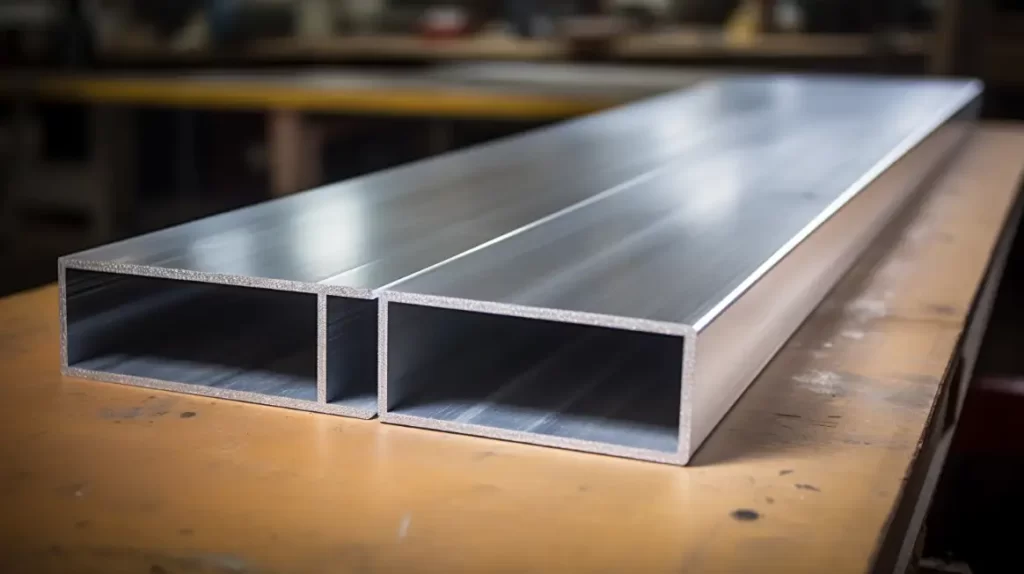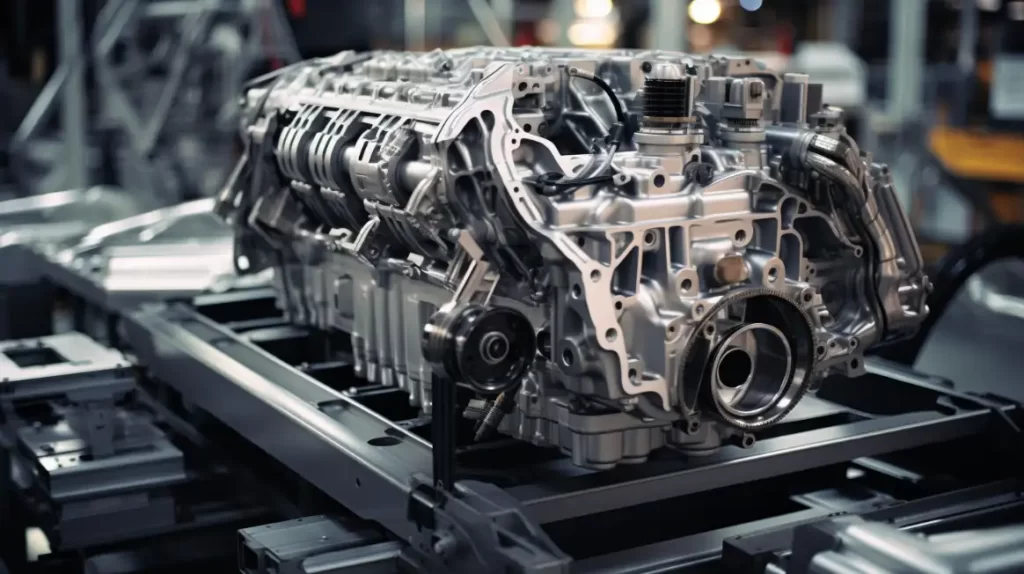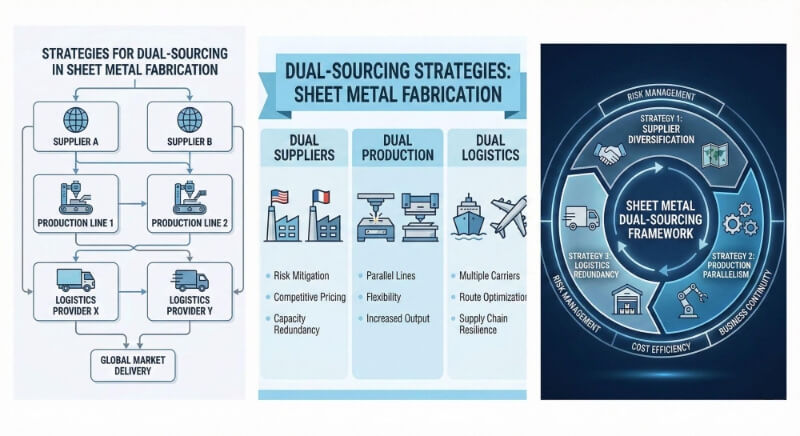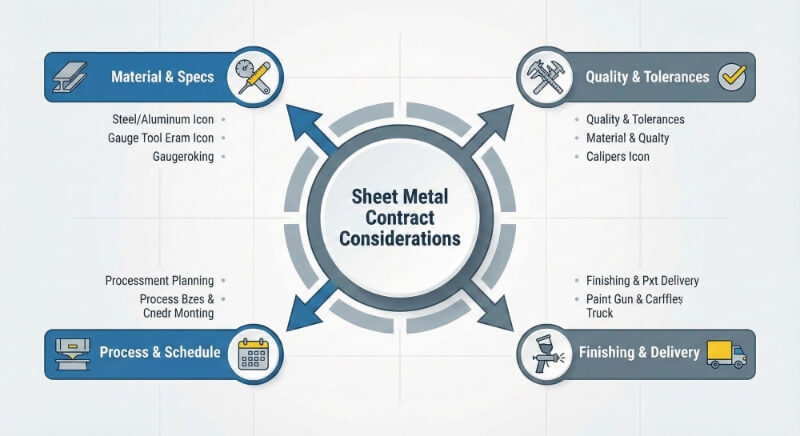What does ‘mill finished aluminum’ mean? This is not industry jargon but the basis for many products we use daily. We’ll help you understand the practical and essential uses of this versatile material so that you can make informed decisions.
Mill finish aluminum has been rolled in its original state and appearance. Its unaltered, natural surface characterizes it and requires no chemical or mechanical finishing. Its simple, raw aesthetic, functional versatility and cost-effectiveness are highly appreciated.
Are you curious to learn how this material, often overlooked, can make a difference in your project? Stay tuned as we explore the benefits and uses of mill-finish aluminum to help you make a more informed decision for your next project.

Understand the basics of mill finish aluminum.
What is Mill Finish Aluminium?
The mill finish is aluminum’s unaltered, raw surface as it leaves the rolling mill. This is the original state of aluminum, without any surface treatments like anodizing, painting, or lacquering. Its simplicity lends it an industrial look characterized by a slightly rough, matte texture. We at Shengen understand the importance of appreciating this simple form for clients who value function over aesthetics.
Why Mill Finish is Important: Industry Relevance
Mill finish aluminum can be precious in industries that place performance and precision above appearance. The untreated surface of mill-finish aluminum is especially advantageous when the material will be either hidden or further processed. Industries like aerospace and automotive, where weight and durability are crucial, often use mill-finish aluminum.
Mill Finish Aluminium Production Process
From Bauxite To Aluminium
Shengen’s transformation of bauxite – the primary ore for aluminum – into sleek, functional products is truly remarkable. The journey starts with the extraction and refinement of alumina from the ore using the Bayer Process. Hall-Heroult is used to separate alumina from oxygen and aluminum. Manufacturers use pure aluminum to produce final products, such as those with mill finishes.
Rolling Mills and Mill Finish
The role of rolling mills is crucial in shaping aluminum into its final shape. In the manufacturing process, freshly extracted aluminum is compressed between heavy rolls. This thins the metal to the desired thickness. This process yields a surface known as mill finish. The metal remains in its natural, unaltered state, preserving its original texture and composition. This characteristic makes it a superb choice for industrial applications.
Understanding the Gauge and Thickness of Mill Finish Aluminium
Thickness and gauge are essential parameters in mill-finish aluminum. They determine whether the material is suitable for different applications. The thickness of an aluminum sheet is measured in millimeters or inches. Gauge, on the other hand, is the traditional numerical representation. A higher gauge number indicates a thinner sheet.

Mill Finish Aluminium: Characteristics
The Aesthetics of a Natural, Untreated Appearance
The natural and unpretentious look of mill-finish aluminum is a great thing. This finish does not try to hide the true nature of the metal. It embraces the raw industrial aesthetic, appealing to many people in manufacturing and design. Each sheet is unique because the surface, which is typically matte and slightly rough in texture, bears genuine marks from its production process.
Physical Properties Durability, malleability, and Strength
Mill finish aluminum’s physical properties are a testament to the wide range of industrial applications. It is known for its durability and resistance to wear over time. This makes it an excellent choice for a variety of projects. The malleability of the metal is also a significant benefit. It can be easily cut, shaped, or formed to meet bespoke requirements. Mill finish aluminum is strong despite being lightweight. Industries such as aerospace and automotive highly value the balance between lightweight and strength, where performance and efficiency are paramount.
Chemical Properties: Resistance To Corrosion And Oxidation
The inherent resistance of mill-finished aluminum to corrosion and oxidation is one of its most attractive features. Aluminum forms a protective oxide film when exposed to air. This layer protects the metal beneath from further degradation. Mill-finish aluminum is a popular choice for environments that require longevity and durability without additional surface treatments. We at Schengen emphasize this benefit to our customers so they can understand the value and reliability that Mill Finish Aluminum offers.
Applications and Uses
Industrial Applications: From Aerospace to Construction
Mill-finished aluminum is greatly appreciated for its versatility and performance in the industrial sector. Its weather resistance makes it a common choice in construction for structural components, roofs, and curtain wall systems. The automotive industry uses aluminum for engine parts and body panels. Its lightweight nature improves fuel efficiency while maintaining safety. Mill finish aluminum, which offers the best balance between strength and weight, is essential in aerospace, where every gram matters.
All-day Products Made from Mill Finish Aluminum
The influence of mill-finish aluminum extends far beyond its industrial uses. It is also an integral part of our daily lives. Its corrosion resistance and durability make it an excellent choice for outdoor furniture, electronic casings, kitchen utensils, and other household items. Heat exchangers, cooling systems, and electronic casings use the material’s thermal conductivity to their advantage.
The Uses of Art and Architecture in Innovative Ways
Creative industries have taken note of the raw industrial appeal of mill-finished aluminum. Architects and artists are drawn to its raw beauty, often incorporating it into sculptures, installations, and modern facades. The material is robust and malleable. It allows for creating innovative designs that will stand the test of time.

Compare aluminum mill finish with other finishes.
Compare Mill Finish and Anodised Aluminium
Anodized and mill-finish aluminum are both popular options with unique advantages. Mill finish aluminum is in its raw, natural state and offers a rugged, industrial aesthetic. It’s a suitable option for applications that will be concealed or require further finishing. Anodized aluminum, on the other hand, provides a protective coating that increases the metal’s durability and resistance to wear. It also allows for custom coloring. It is, therefore, suitable for applications that require both durability and aesthetics.
Mill Finish: Powder Coated or Painted?
Powder coatings and painting techniques are prevalent and offer many different colors and textures. These finishes can provide extra protection from environmental factors, and they can also enhance the visual appeal of the material. They are more expensive and may take longer to produce. People favor the mill finish for its clear, natural appearance and simplicity. They choose it for the authentic, natural look it offers. This finish is the preference for projects seeking to maintain aluminum’s inherent properties without additional finishing.
The Cost-Benefit Analysis: Choosing the Right Finish for Your Project
A careful cost-benefit evaluation is required to select the best finish for your aluminum project. The mill finish is the most cost-effective option, offering a good balance between performance and price. This is the best choice for projects that are more concerned with the natural properties of metals, such as thermal conductivity or corrosion resistance. When aesthetics are crucial or extra resistance to the environment is necessary, finishing options like anodizing or powder coating might be worth considering. Although these have a higher initial cost, they better suit the project’s needs.
Maintenance and care for mill-finish aluminium
Cleaning and Maintenance: Best Practices
Regular cleaning and maintenance are required to maintain the integrity of mill-finished aluminum. Using mild soap with warm water is the best approach to remove dirt and residue. You can use a soft cloth or brush to gently scrub the surface without scratching to remove more stubborn stains. Avoid using harsh cleaners or abrasive products, which can damage the natural oxide coating of aluminum.
Preventive measures: Ensure longevity
Preventing damage is essential for the long-term durability of mill-finished aluminum. Regular inspections allow for early detection of signs of corrosion or wear. You should keep the aluminum well-ventilated and dry to prevent moisture-induced oxidation. In industrial or coastal environments, where harsh elements are common, you may need extra protective steps, such as adequately installing sealants.
When to Refinish – Recognizing the signs
Mill finish aluminum has a reputation for being durable, but there will come a point when refinishing may be necessary. You should consider refinishing when you notice extensive corrosion, discoloration, or compromised surface integrity. Refinishing may involve cleaning, polishing, or applying protective coats depending on the extent and intended use of the item.
Challenges and limitations
Resolving common misconceptions and challenges
Despite its versatility and robustness, many people must understand mill-finish aluminum. Untreated aluminum is often mistaken for inferior material. This is not true. Mill-finish aluminum is highly durable and resistant to corrosion. It does have its challenges, especially in aesthetic applications. The industrial look of the material may only suit some designs. Incorrect handling can also lead to scratches on its surface.
The Limitations of Manufacturing and Application
Mill-finish aluminum is a material that requires expertise and precision to work with, especially in the manufacturing industry. Handling the material with caution is essential to avoid surface damage. Although versatile, mill-finish aluminum may be better for projects requiring a sophisticated aesthetic or extra surface protection.
The Future of Mill finish in a competitive market.
Even in a highly competitive market, the future of mill-finish aluminum is promising. The intrinsic properties of mill-finish aluminum, including its sustainability, recyclability, and versatility, make it an appealing choice in various applications. To remain competitive, you need to be innovative and flexible. Exploring new applications and addressing industry needs is essential.
Conclusion
The mill finish of aluminum is a testament to its versatility and resilience. The natural, unadorned look of the metal belies its adaptability and robustness. We at Shengen are proud of our understanding of this material and its role in various industries. From construction and aerospace to consumer products and creative endeavors such as art and architecture, we recognize its importance.
Do you need a reliable sheet metal parts manufacturer? Shengen is the place to go. We specialize in sheet metal laser cutting, bending, surface finish, and sheet metal welding. Reach out to Shengen Today and seek help from professionals!
FAQs:
How is mill-finish aluminum made?
The mill finish is the most natural form of aluminum, straight from the rolling machine. The surface is raw, unpolished, and untreated. Aluminum is extracted from bauxite, refined, and passed through rolling mills to thin and shape it. Mill finish aluminum is the resultant surface without any further finishing.
What is the mill finish of aluminum compared to other finishes?
Mill-finish aluminum is renowned for its industrial, natural appearance. It is ideal for applications that hide the material or require further processing. Mill finish aluminum is less resistant to wear and corrosion than anodized or plated aluminum but more cost-effective. Mill finish is a popular choice for aluminum when its intrinsic properties, like thermal conductivity and durability, are more important than the aesthetic appeal.
Can mill-finished aluminum be used outside?
Aluminum with a mill finish is suitable for outdoor use. The natural oxide coating provides some protection against corrosion. However, it can be susceptible to corrosion in harsh environments or coastal regions. It’s essential to consider the local climate when using outdoor products. You can opt for extra protective treatments or measures to increase its durability.
How to clean and maintain mill-finished aluminum
To clean mill finish aluminum, use mild soap and warm tap water to remove dirt or residue. Avoid abrasive cleaners or those with strong acids or alkalis, which can damage the surface. Regular cleaning and maintenance are advisable to keep the aluminum in good condition and maintain its appearance. Sealants or other preventive measures may be required in industrial and coastal environments to protect against corrosion.
More Resources:
Mill finish – Source: Wikipedia
Mill Finish Aluminum vs Anodizing – Source: Valence
The Journey from Bauxite to Aluminium – Source: Feeco
Hey, I'm Kevin Lee

For the past 10 years, I’ve been immersed in various forms of sheet metal fabrication, sharing cool insights here from my experiences across diverse workshops.
Get in touch

Kevin Lee
I have over ten years of professional experience in sheet metal fabrication, specializing in laser cutting, bending, welding, and surface treatment techniques. As the Technical Director at Shengen, I am committed to solving complex manufacturing challenges and driving innovation and quality in each project.




